Retro Replay Review
Gameplay
DoDonPachi delivers a relentless, sky-filling barrage of enemy fire that exemplifies the manic shooter genre. Building on the foundation laid by its predecessor, DonPachi, the core mechanics remain familiar: you pilot a nimble fighter craft through vertical-scrolling stages, choosing one of three distinct weapons at the outset. Each weapon—whether it’s the concentrated laser beam, wide-spread shot, or homing missiles—evolves in power as you collect power-up icons dropped by defeated foes.
(HEY YOU!! We hope you enjoy! We try not to run ads. So basically, this is a very expensive hobby running this site. Please consider joining us for updates, forums, and more. Network w/ us to make some cash or friends while retro gaming, and you can win some free retro games for posting. Okay, carry on 👍)
The heart of DoDonPachi’s gameplay is its scoring system, which rewards precision and risk-taking. Chains form when you graze bullets or eliminate enemies in quick succession, sending your score skyrocketing. The game’s “Bee Medals” add another layer of depth: acquiring these hidden tokens not only boosts your total but also unlocks special bonuses that carry over between stages, encouraging thorough exploration and replay.
Boss encounters in DoDonPachi are a sight to behold, culminating in the unforgettable showdown against the giant mecha bee. Each boss unleashes intricate bullet patterns—often described as “bullet hell”—forcing you to learn their attack rhythms and carve safe paths through a storm of projectiles. With limited lives and no continues in arcade mode, every run feels like a high-stakes tightrope walk, solidifying DoDonPachi’s reputation as a true test of reflexes and endurance.
Graphics
Graphically, DoDonPachi shines with detailed sprite work and vibrant color palettes that stand out even on its original arcade hardware. Enemies range from sleek, angular fighters to hulking mechanical monstrosities, each rendered with care to convey a distinct personality. Backgrounds teem with futuristic military installations, abandoned wreckage, and technological marvels that scroll past in seamless loops.
The game’s bullet patterns are both dazzling and functional—brightly colored projectiles contrast sharply against darker backdrops, making it possible (though challenging) to spot openings. Explosions and weapon effects are given just enough flash to feel impactful without cluttering the screen. Subtle parallax scrolling adds a sense of depth, reminding players that they’re hurtling through a multi-layered battleground.
On modern displays via ports or emulation, DoDonPachi’s visuals hold up remarkably well. While it doesn’t boast the high-definition polish of contemporary shooters, its pixel art charm and clear design ensure that every bullet, enemy sprite, and background element remains legible. For fans of retro-style shooters, these graphics strike an ideal balance between nostalgia and playability.
Story
DoDonPachi’s narrative is lean, opting to keep the focus squarely on frenetic action. In the aftermath of the first DonPachi incident—where a rogue military faction wreaked havoc—a new threat emerges: an autonomous robotic hive commanded by an ominous AI known only as the Bee System. You, standing in for humanity’s last hope, must pilot your fighter through waves of renegade machines to dismantle this digital swarm.
Each stage adds a bit of context through brief mission briefs and background visuals, but the game never bogs you down with long cutscenes or dialogue trees. This streamlined approach emphasizes immediacy, drawing you back into the cockpit and the next adrenaline rush. The final confrontation against the giant mecha bee ties back to the title’s namesake, delivering a satisfying narrative payoff despite the overall minimalism.
For players seeking deep lore or character development, DoDonPachi might feel sparse. However, its sparse storytelling is part of its design ethos: to immerse you in a raw, unfiltered shooter experience. The thin narrative thread that exists provides just enough context to keep each sortie feeling purposeful, without detracting from the blistering pace of play.
Overall Experience
DoDonPachi stands as a cornerstone of the bullet hell subgenre, delivering a perfect mix of strategic depth and lightning-fast action. Its learning curve is steep—expect to be overwhelmed by enemy fire in your first few runs—but with each attempt, you’ll begin to recognize patterns, hone your chain-building techniques, and eke out higher scores. The game’s addictive nature is a testament to Cave’s design philosophy, rewarding persistence and mastery.
Replay value is exceedingly high. Between uncovering hidden Bee Medals, experimenting with weapon types, and chasing that elusive perfect run, DoDonPachi offers nearly limitless permutations. Leaderboards on various ports and arcade cabinets foster a competitive spirit, pushing you to shave milliseconds off your bullet-dodging maneuvers and rack up chain combos for bragging rights.
For potential buyers, DoDonPachi is a must-have if you’re drawn to classic shmups or eager to experience one of the most influential manic shooters ever made. Its blend of intuitive mechanics, vibrant visuals, and punishing difficulty ensures that every moment feels earned. While the absence of a deep storyline may deter some, the core gameplay loop is so compelling that it easily carries the package. Whether you’re a seasoned arcade veteran or a curious newcomer, DoDonPachi promises a thrilling ride through waves of adversaries and into the heart of bullet hell.
 Retro Replay Retro Replay gaming reviews, news, emulation, geek stuff and more!
Retro Replay Retro Replay gaming reviews, news, emulation, geek stuff and more!

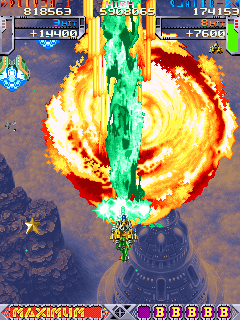
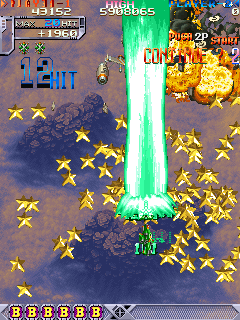
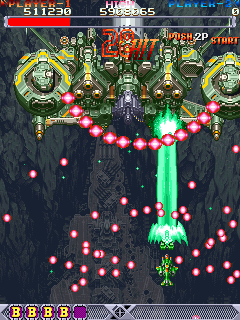
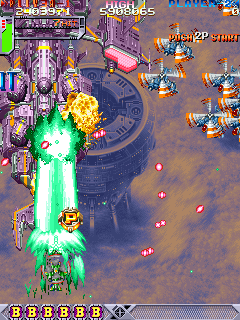
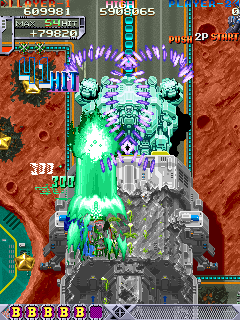


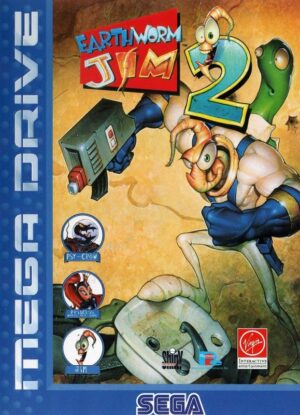
Reviews
There are no reviews yet.